
Although I've always felt that the FT-1000MP was among the best performing commercial hf rigs available, I've
always had mixed feelings about the fast AGC characteristics. In particular, the release time constant seemed
too slow and didn't allow quick recovery for weak signal cw copy during bursty static conditions on topband.
Also, during cw contests, I often had the feeling that I was missing the first few cw elements when a weak
station came back to me quickly. I decided to take a closer look with the aid of my computer soundcard, and
compare my MP with a Ten-Tec Corsair.
The first test was meant to check the MP's recovery from break-in transmission. While recording the receiver
audio through the soundcard, I transmitted a dot in break-in mode and noted the recovery to receive a
carrier that was on frequency. What you will see is the audio waveform with a timescale along the bottom.
On the left of the waveform is the received carrier, then the transmitted dot's sidetone, then the turnover delay,
followed by the receive audio (carrier) return. On three of the waveforms you will finally see the received
carrier turned off to show the underlying receiver noise level. AGC is at "fast", receiver RF gain was set at
maximum and received carrier signal was approximately S9 for the first series of waveforms and then the test was
repeated with a received carrier signal of roughly S1. Finally, a waveform was captured showing the MP's recovery
from SSB PTT release with slow AGC.
The second test was meant to check the MP's recovery from a loud signal or static burst on top of a weak signal.
What you will see at the beginning of the waveform is the weak (under S1) received carrier, then three S9+20dB
received dots (40msec between dots), then the recovery to receive the underlying weak carrier, and finally the
weak signal is turned off to show the underlying noise level.
Note: The signal levels used in the testing are crucial. A 10dB change in one of the received signal levels can
make a HUGE difference in the results. Unfortunately, I don't really have suitable test equipment and I did the
best I could with what was on hand to investigate an area of performance I feel is fundamentally important and
has been all but ignored. In setting the "S1" signal level, the goal was really to be about 5 - 10dB above the
noise level. Perhaps someone with the right equipment can get involved . . .
Test 1 - Recovery from Break-In Transmission
FT-1000MP recovery to S9 rcvd sig | Corsair recovery to S9 rcvd sig
|
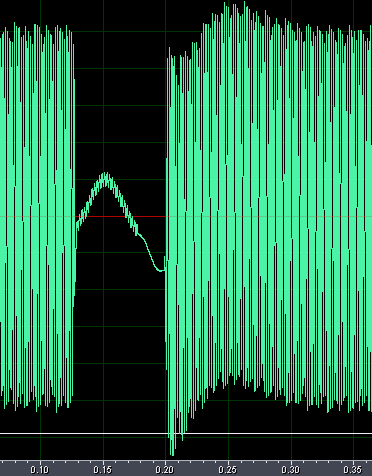 | 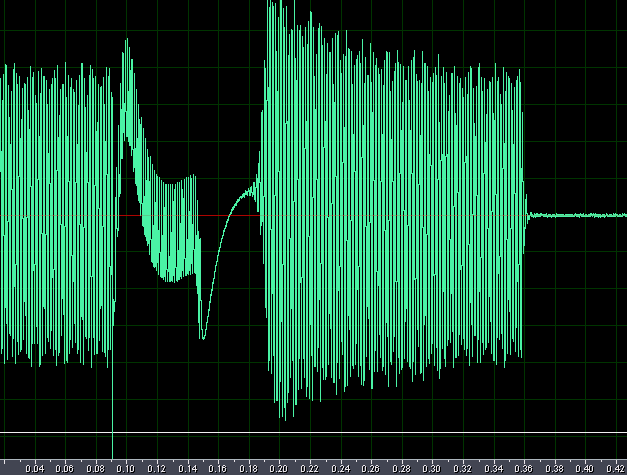 |
| MP is quite fast at roughly 20msec | Corsair takes about 40msec |
FT-1000MP recovery to S1 rcvd sig | Corsair recovery to S1 rcvd sig
|
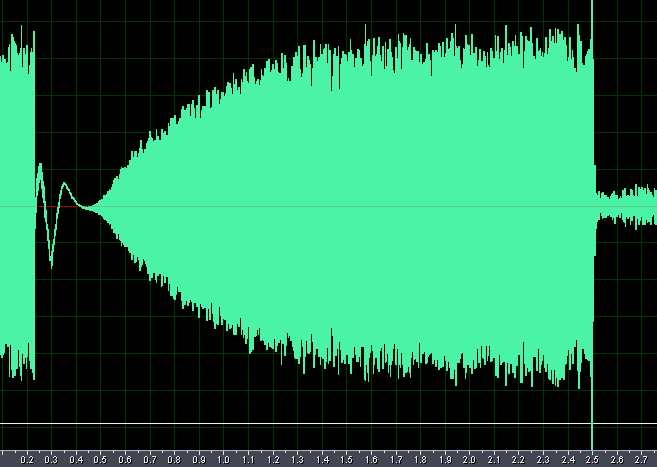 | 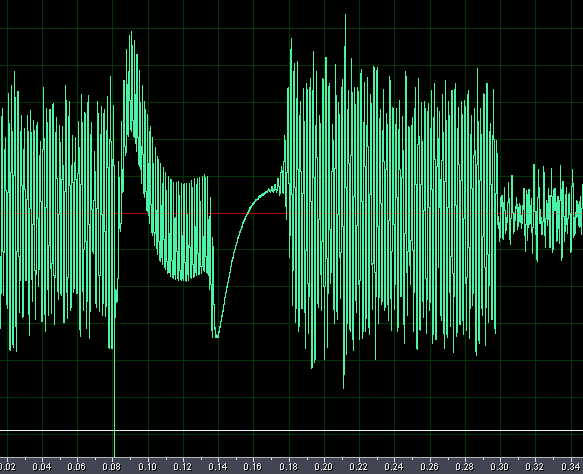 |
| Is this the same radio? MP now takes about 1 sec (1000msec) to recover | Corsair still recovers in 40msec |
Icom 765 recovery to S1 rcvd sig
 765 recovers in about 50 msec
765 recovers in about 50 msec
FT-1000MP Slow AGC - recovery from SSB PTT
 MP recovers in a fast 20msec. Test was repeated with fast AGC and S1/S9 rcvd carrier with same results.
MP recovers in a fast 20msec. Test was repeated with fast AGC and S1/S9 rcvd carrier with same results.
Test 2 - Recovery from Strong Signal Burst
FT-1000MP Fast AGC
 MP takes nearly one full second to fully recover from strong signal burst
MP takes nearly one full second to fully recover from strong signal burst
Corsair Fast AGC
 Corsair takes about 350msec to fully recover from strong signal burst, beginning with 200msec of AGC hang
Corsair takes about 350msec to fully recover from strong signal burst, beginning with 200msec of AGC hang
FT-817 Fast AGC | FT-301S Fast AGC |
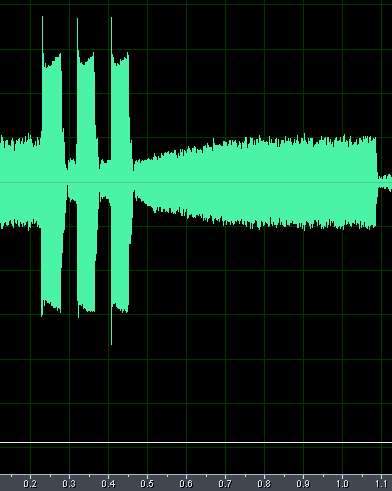 | 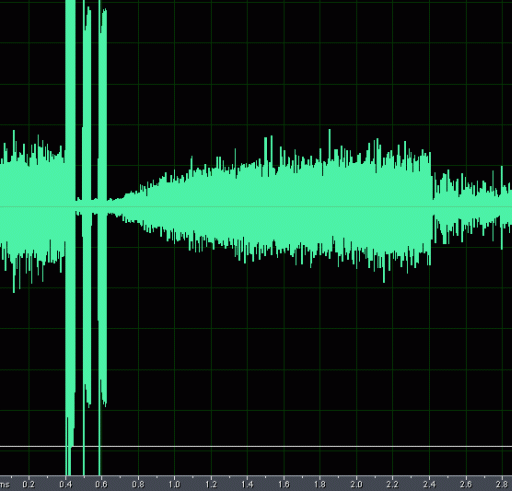 |
| FT-817 takes about 250msec to fully recover from strong signal burst, but the weak signal is about 50% volume almost instantly and you can actually hear the weak signal between the strong dits. |
FT-301S takes about 750 msec to recover |
Icom 765 Fast AGC
 765 recovers in about 400 msec
765 recovers in about 400 msec
Postscript
The more I consider the test results showing the slow AGC recovery with weak received signals,
the more I've become convinced that this explains many, many instances of weak signals being
very hard to read on the FT-1000MP and blaming it on the propagation. W9OL emailed me after
reading the info I posted and said: "I've experienced this when dxing. I just thought it was
propagation. A weak station would call cq, I'd answer and when I stopped calling, I'd miss the
first part of who he came back to. This happened often enough that I recognize what you're
describing. I just never realized it was the agc and always thought that it must be strange
propagation condx where weak signals seemed to get stronger as they transmit." It wasn't . . .
I've subsequently found that I can virtually eliminate the delay in AGC recovery when listening
to weak signals by turning the RF Gain way down and the AF Gain way up, effectively turning off
the AGC. If I set the RF Gain control so it's just past 12 o'clock, pointing between the "G" and
"A", then this is as high as it can be set with quick AGC recovery. But at this RF Gain setting,
I must advance the AF Gain to 3 o'clock or 75% of maximum in order to hear weaker signals. You
risk ear damage from the very loud volume if you tune in a strong signal at these settings, since
little AGC action is present. This is a not a very acceptable solution. The correct solution is
to fix Yaesu's AGC circuitry, and I leave that to the engineers at Yaesu if they're listening.
P.P.S. I'm currently in the process of gathering and analyzing FT-1000D results to see if its AGC
behaves in a similar manner. I suspect that it does. In contrast, the pint-size FT-817 results
look much better. I haven't looked at a Mk V. In actual contesting use, the Icom 765 AGC
recovery is MUCH better than the MP. |
N1EU Home




 765 recovers in about 50 msec
765 recovers in about 50 msec
 MP recovers in a fast 20msec. Test was repeated with fast AGC and S1/S9 rcvd carrier with same results.
MP recovers in a fast 20msec. Test was repeated with fast AGC and S1/S9 rcvd carrier with same results.
 MP takes nearly one full second to fully recover from strong signal burst
MP takes nearly one full second to fully recover from strong signal burst
 Corsair takes about 350msec to fully recover from strong signal burst, beginning with 200msec of AGC hang
Corsair takes about 350msec to fully recover from strong signal burst, beginning with 200msec of AGC hang


 765 recovers in about 400 msec
765 recovers in about 400 msec